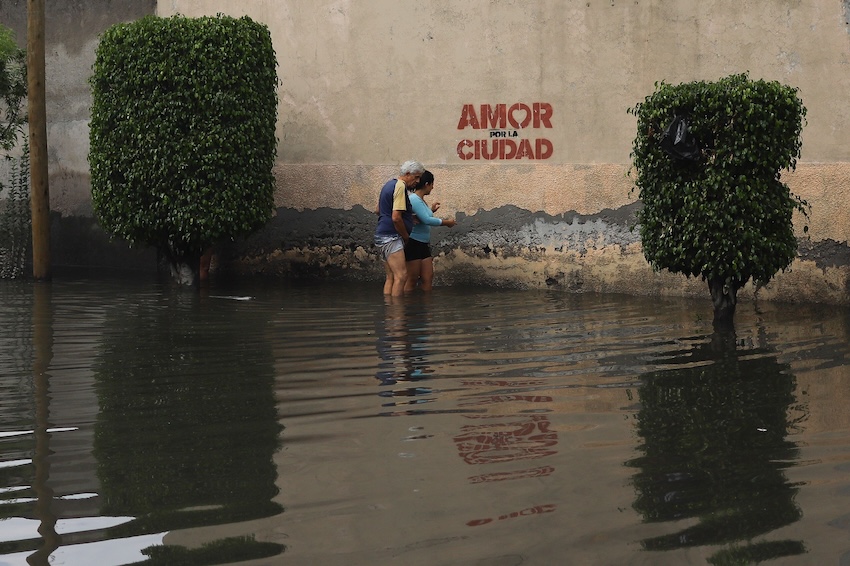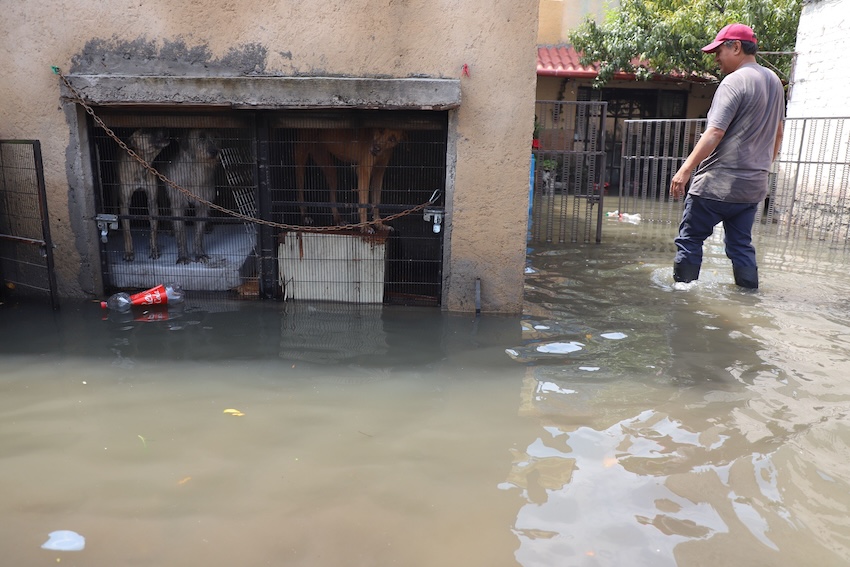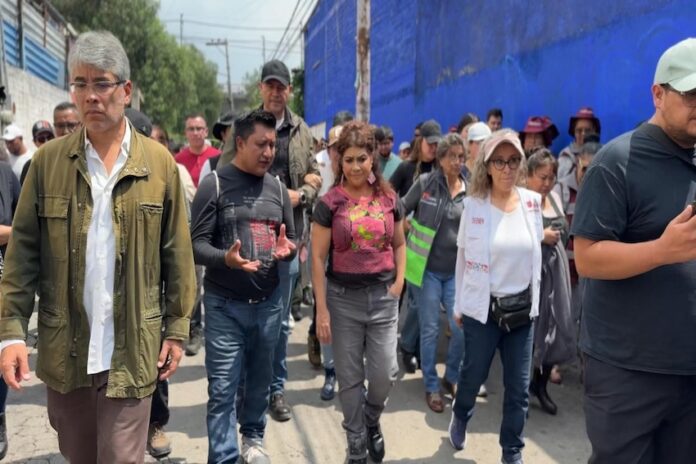After record rainfall deluged Mexico City over the weekend, President Claudia Sheinbaum ordered a house-by-house census of the damage, while her Welfare Ministry has launched an emergency rescue program to help those most in need.
During the president’s Monday morning press conference, Welfare Minister Ariadna Montiel said that in addition to calculating the damage, her office is channeling support to the most heavily impacted areas.

By mid-day Sunday, Mexico City Mayor Clara Brugada’s office had set up seven command posts in Iztapalapa in order to coordinate dredging efforts, deliver food rations and hand out first-aid kits.
Brugada also said her government was stepping up efforts to build a regulating reservoir, or surge tank, to help with flood control in the hard-hit eastern borough of Iztapalapa.
Metropolitan Services officials will soon meet with the owner of the property in the Santa María Aztahuacán neighborhood that could be converted into a reservoir.
“We can channel all the water coming from the hill, which is what floods the entire neighborhood, to this area,” Brugada said. The hill the mayor referred to is the long-dormant volcano Cerro de la Estrella that looms over neighborhoods in the middle of Iztapalapa.
‘One of the most intense storms in decades’
In less than three hours, 75 mm (3 inches) of water fell on Saturday, overflowing the city’s drainage system. National Water Commission director Efraín Morales said the downpour was one of the most intense storms to hit the nation’s capital in decades. The entire city and three México state municipalities to the east were drenched.
Morales said the magnitude of the downpour, combined with garbage accumulation in drains and the deterioration of infrastructure due to uneven ground settling, magnified the flooding.
The cloudburst and resulting emergency forced Mexico City officials to declare a Purple Alert in Iztapalapa, where 20 neighborhoods were inundated for hours, forcing dozens of families to spend the night in raw sewage after drains and floodgates overflowed.
A Red Alert (the second-highest) was issued for the northeastern Mexico City borough of Venustiano Carranza, while the city’s remaining 14 boroughs were placed under an Orange Alert.

Iztapalapa authorities reported heavy damage to homes and infrastructure due to floodwaters that were as deep as 1.5 meters (5 feet). The flooding there prompted Metro officials to close the five easternmost stations of Line A.
Water was still rising in Santa María Aztahuacán on Sunday morning.
An elderly couple told the newspaper La Jornada that they did not sleep at all on Saturday night. “My wife and I sat there on a chair the entire time,” said the man, who repeatedly tried to clear the only drain on his street with a stick.
Another Iztpapalapa resident tearfully told La Jornada that the water reached her granddaughters’ necks as they struggled to escape the flooding.
Insurance adjusters contracted by the city government were also scheduled to visit homes this week to record losses and prepare claims in accordance with the flood protection policy.
With reports from Expansión, La Jornada, El Economista and El Sol de México
